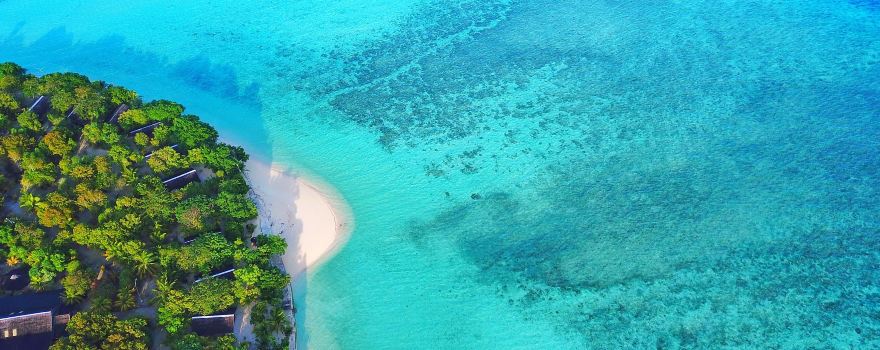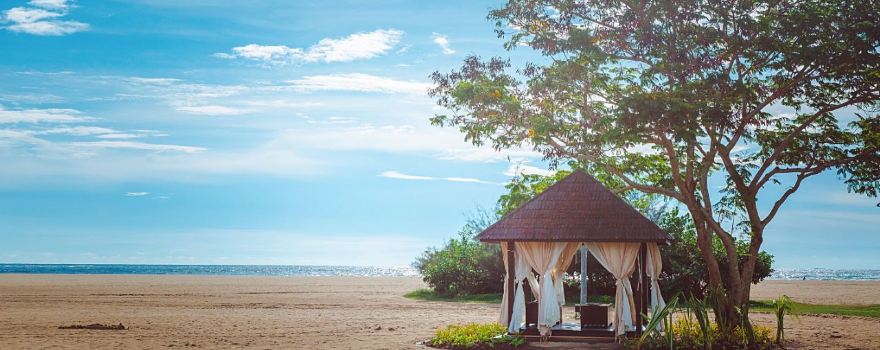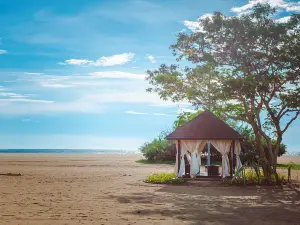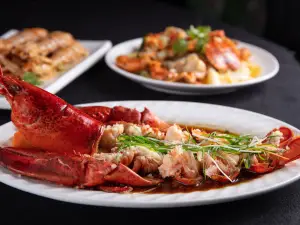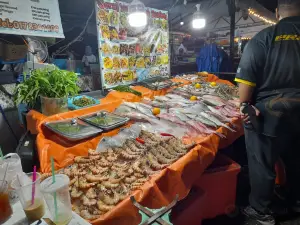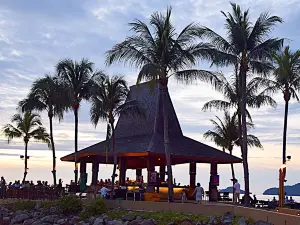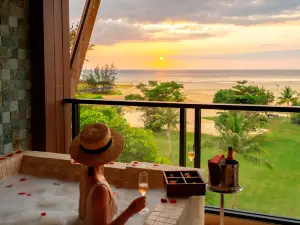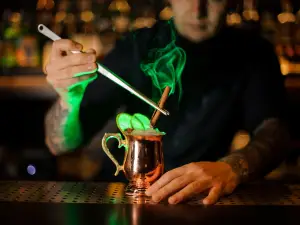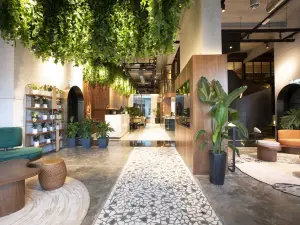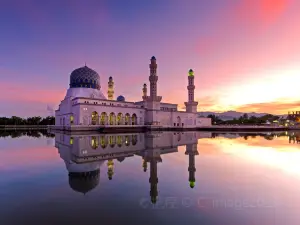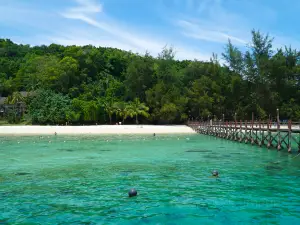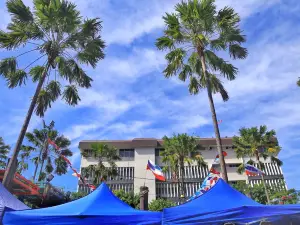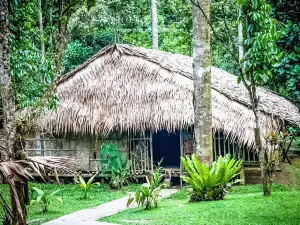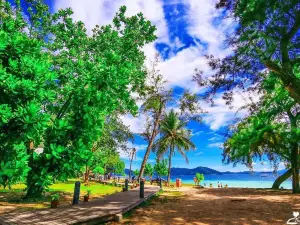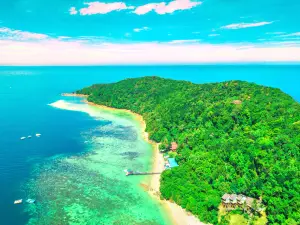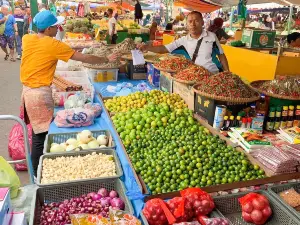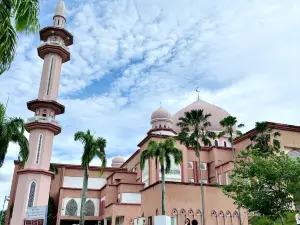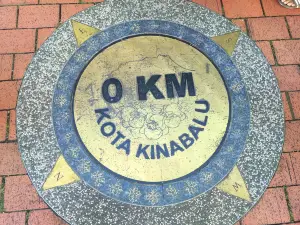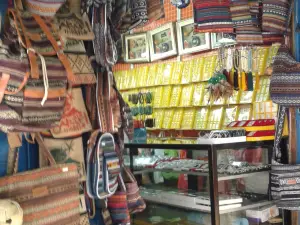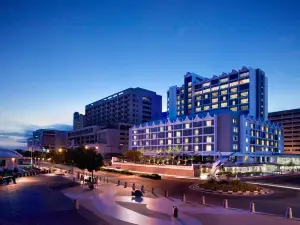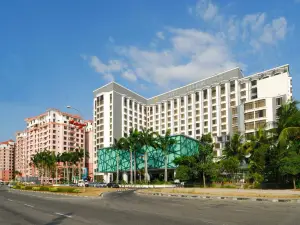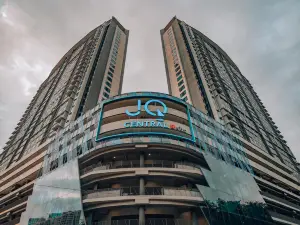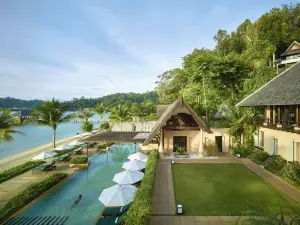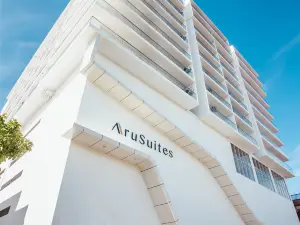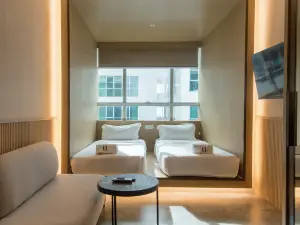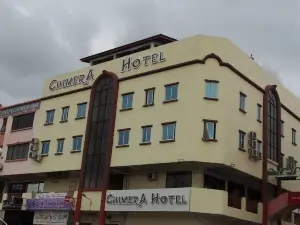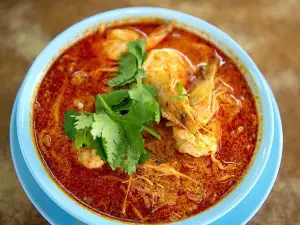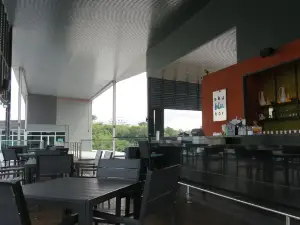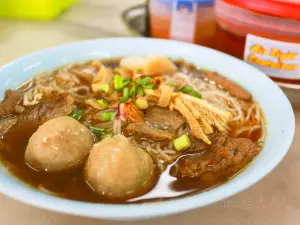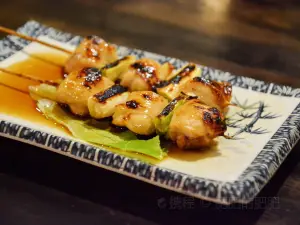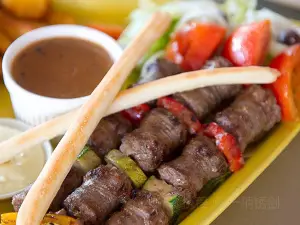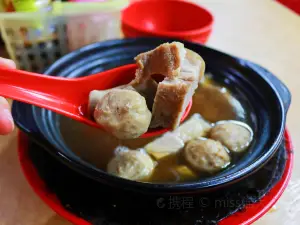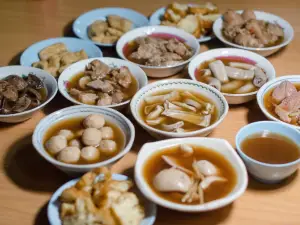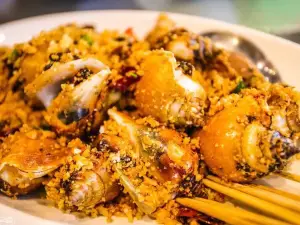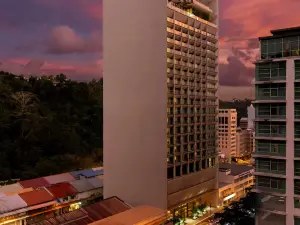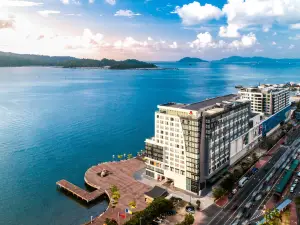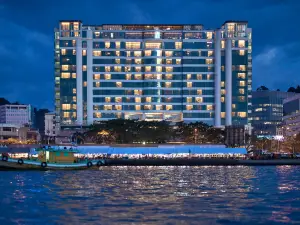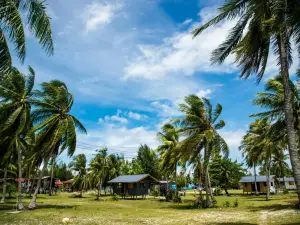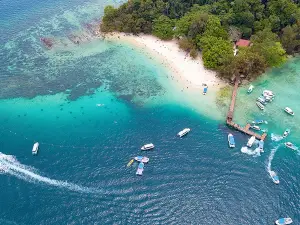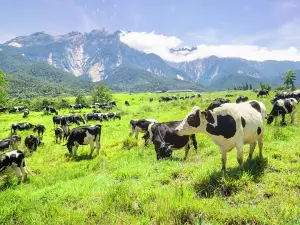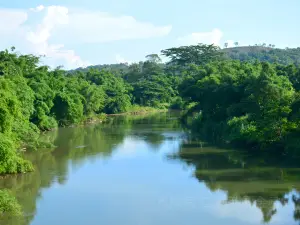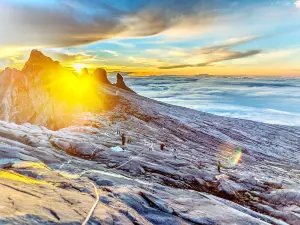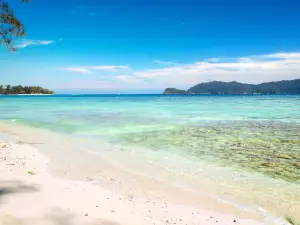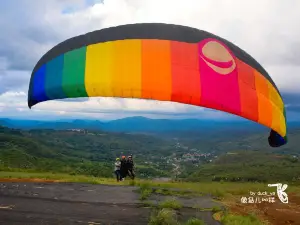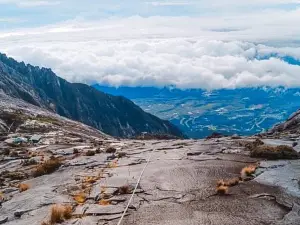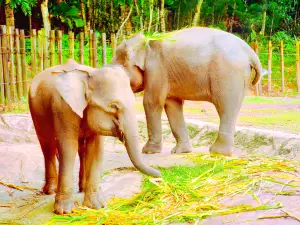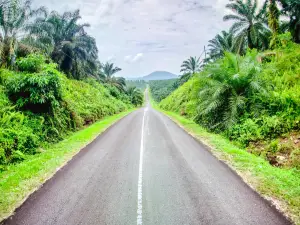Things to Do in Kota Kinabalu in 2025 - Top Attractions, Local Food, Hotels & Travel Tips (Updated April, 2025) | Trip.com
About Kota Kinabalu
Recommended trip: 2–4 day(s)
Recommended trip: 2–4 day(s)Current Weather Conditions
Kota Kinabalu Local Experiences Map

Trending in Kota Kinabalu
Kota Kinabalu Local Travel Guide 2025
Kota Kinabalu Brief Guide
Kota Kinabalu, your passport to Borneo's breathtaking beautys, invites you to explore its captivating blend of nature and culture. Begin your journey with the historic Atkinson Clock Tower and enjoy panoramic views from Signal Hill. The city's diverse architecture—from golden-domed mosques to tranquil temples—tells a story of rich heritage. Tempt your taste buds with local specialties like laksa, a dish as memorable as the sunsets over Pulau Manukan. Whether you're seeking adventure or relaxation, Kota Kinabalu is a destination that crafts its own unforgettable tale.
Kota Kinabalu Must-try Local Experiences
1. Discover Kota Kinabalu City Centre Marvel at the Kota Kinabalu City Mosque, its lagoon mirroring its elegance under a full moon. Admire the towering deities at Pu Toh Tze Temple, then soak in panoramic views from Signal Hill Observatory Platform. Each spot tells a unique tale of Kota Kinabalu’s charm—your adventure awaits. 2. Glide Through Sabah's Natural Beauty and Wildlife Explore Kota Kinabalu stunning landscapes—Tunku Abdul Rahman Marine Park offers islands with crystal-clear waters and sandy shores, perfect for adventure. Tanjung Aru Beach sets the stage for breathtaking sunsets, ideal for capturing unforgettable moments. Glide along the Klias River, where proboscis monkeys and dazzling fireflies illuminate the lush wildlife habitat. 3. Discover the Living Traditions of Sabah’s Five Tribes Uncover Sabah’s rich heritage at Mari Mari Cultural Village, where the traditions of five tribes—Dusun, Rungus, Lundayeh, Bajau, and Murut—spring to life. From masterful farmers to legendary warriors, each tribe shares its unique tale in a setting where history and modernity coexist. Step into their world, and let Sabah’s culture spark your next adventure. 4. Witness the Pesta Kaamatan Harvest Festival Join Pesta Kaamatan on May 30th and 31st each year—Sabah’s Harvest Festival, a vibrant celebration of culture and unity. Over 50 ethnic groups gather in traditional attire, sharing music, dance, and gratitude for nature’s bounty. It’s a celebration as rich in spirit as it is in color. 5. Savor Sabah’s Flavors in Kota Kinabalu Taste Kota Kinabalu’s culinary soul through dishes like hinava (zesty raw fish salad), ambuyat (sticky sago), and tuaran mee (stir-fried noodles). Savor smoky ikan bakar (barbecued fish) by the sea, and end with pinjaram, Sabah’s crispy “UFO Cake.” From street stalls to seaside spots, every bite is a flavorful journey—come hungry, leave happy. 6. Shop Your Way Through Kota Kinabalu Step into Kota Kinabalu’s shopping scene, where tradition meets modern flair. Wander through the Handicraft Market, a lively maze of handmade crafts, pearls, woven baskets, and traditional beadwork—ideal for unique finds. For contemporary picks, explore Suria Sabah or Imago Mall, where fashion, tech, and local treats await.
Kota Kinabalu Travel Tips
1. Mount Kinabalu Climb Preparation: Climb during the dry season (March–September). Book permits and Panalaban accommodation 3-6 months ahead—slots fill fast. Permits are tied to your accommodation, and the climb requires 2 days and 1 night. Respect local beliefs by avoiding loud noises or shouting on the mountain as the mountain is considered sacred. 2. Respect Local Customs and Traditions: Kota Kinabalu is home to various ethnic groups and religions. Dress modestly and be respectful when visiting places of worship. Avoid public displays of affection. 3. Ramadan Considerations: If visiting during Ramadan, be mindful of eating, drinking, or smoking in public during daylight hours. Many restaurants may be closed or have limited hours, so plan meals accordingly. 4. Beach Safety: Watch for strong currents and jellyfish, especially during the monsoon season (November–February). Swim only in designated areas with lifeguards. 5. Mosquito Repellent: Use 30-50% DEET in rural/jungle areas; 15% DEET works in the city. Avoid herbal repellents—they’re ineffective and attract wasps. Bring high-concentration DEET from home; it’s rare in Malaysia. Test for skin reactions. Rainy season (October–February) increases mosquito activity—always carry repellent. 6. Tipping Culture: Tipping is not mandatory in Kota Kinabalu, as most hotels and restaurants include a 10% service charge. However, small tips for housekeeping, bellboys, or guides who provide excellent service are appreciated. 7. Tourism Tax: Foreign tourists must pay a tourism tax of RM 10 per room per night, usually settled at check-in. Plan for this additional cost when budgeting for accommodations. 8. Drone Photography Regulations: Drone photography in Kota Kinabalu is regulated by the Civil Aviation Authority of Malaysia (CAAM). Permits are required for flights above 120m, in controlled airspace, or near aerodromes. Avoid flying over crowded areas, private properties, and government buildings. Always keep your drone in sight.
Kota Kinabalu Must-see Attractions
Kota Kinabalu serves up a feast for the senses—think fiery sunsets at Tanjung Aru Beach, the sparkling waters of Tunku Abdul Rahman Marine Park, and the cultural pulse of Mari Mari Cultural Village. Whether you’re chasing mountain highs or ocean blues, this city has a way of making every moment unforgettable.
Kota Kinabalu Where to Stay
Kota Kinabalu is a prime destination in Malaysia, known for its stunning beaches, vibrant markets, and diverse accommodation options. The city's lodging is spread across various areas, each offering unique experiences to travelers, from beachfront relaxation to cultural immersion in local markets.
Kota Kinabalu Food Guide
Kota Kinabalu's food scene is a rich tapestry of cultural heritage, featuring the herbal-infused bak kut teh, the nostalgic Hainanese chicken rice, and the unique Sabah Laksa, each offering a taste of the region's diverse culinary traditions and community connections.
Kota Kinabalu Useful Guide
By Air: Kota Kinabalu International Airport (KKIA) is the gateway to Sabah and said to be Malaysia’s second busiest airport, connecting both local and international flights. To reach the city, you can use following options: Airport Bus: Runs every 45 minutes, operating from 7:30 to 20:15. Look out for the bus heading to Kota Kinabalu Downtown. Taxis: Available 24/7 from both terminals. Use the coupon system at Level 1 for a fixed fare of around 30MYR to the city centre. Ride-hailing: Grab is the most popular ride-hailing app in Malaysia. Pick-up is at a designated area (left out of Level 1). Ensure you have a working SIM card—tourist SIMs are available at KKIA. By Bus: Buses are the most affordable way to explore Sabah. Key bus stations: - North Bus Terminal Inanam: Long-distance express buses to East Coast cities like Sandakan, Tawau, and Semporna. Operates 6:30 am–8:30 pm. - Padang Merdeka: Buses to West Coast and Interior towns like Keningau, Kudat, and Ranau. Taxis available nearby. - Wawasan Bus Terminal (temporarily in front of Marina Court): Mini buses to Papar, Kinarut, and Penampang. - KK Central: Buses to Southern Sabah (Sipitang), Sarawak (Lawas), and Brunei. Bring your passport for cross-border trips.
Trip.Best: Kota Kinabalu
Things to do in Kota Kinabalu
What to Do
Masjid Bandaraya Kota Kinabalu
Gaya Street
Mari Mari Cultural Village
Filipino Market
University Malaysia Sabah Mosque
Kota Kinabalu City Centre 0 km
Handicraft Market
Where to Stay
What to Eat
Kota Kinabalu Moments: Through Travelers' Eyes
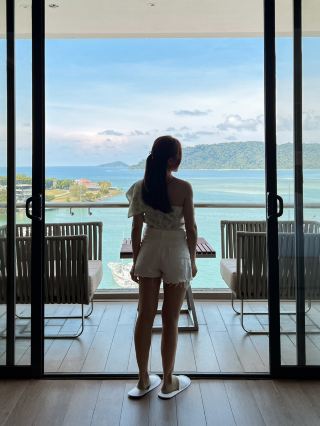
Hotel Review: Seaview Infinity Pool Hotel | Kota Kinabalu, Sabah.

Shangri-La Tanjung Aru, Kota Kinabalu: A Perfect Blend of Luxury and Nature

Kota Kinabalu 6 Nights 8 Days.

5D4N Free & Easy in Kota Kinabalu, Sabah.

Malaysia-Kota Kinabalu-3 Must-Visit Places

It's not that Sanya is unaffordable, but that Kota Kinabalu is more cost-effective!

Family trip to Kota Kinabalu

Kota Kinabalu’s Must-Eat: Otherwise you have not been here
Best of Kota Kinabalu
Site Operator: Trip.com Travel Singapore Pte. Ltd.
